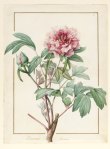You might enter this exhibition expecting a rare view of masterpieces from the golden age of British watercolour – from Alexander Cozens, perhaps, to Joseph Mallord William Turner. Instead it opens with Bright Cloud by Paul Nash, from 1941. In this astonishing picture a white cloud rises, looming, blooming, above a thinly sketched landscape of trees and mountains, its presence intensified by the surrounding bright blue sky. Nash’s work is an homage to the visionary painter, Samuel Palmer, whose warmly coloured, richly symbolic work The Magic Apple Tree (c.1830) is another highlight of the show. Bright Cloud is also a virtuoso demonstration of watercolour’s strengths. His facility in capturing the fleeting effects of nature is matched by the potential of thin washes to suggest a dream-like world coloured by mood and fantasy. Spontaneity is balanced by precision.
Far from being a hundred-year wonder, watercolour has inspired artists and excited collectors from the Renaissance until the present day, and not just in Britain. The walls of this exhibition are packed with resonant national names: Cozens, Constable, Blake, Girtin, Palmer, De Wint, Linnell, Cotman – but the show also embraces Claude Gellée (Le Lorrain) and Paul Cézanne, the master botanical painter Pierre-Joseph Redouté, and John Singer Sargent’s sunlit sketches.
This exhibition is derived entirely from the museum’s own outstanding collection of watercolours, many of which have not been shown for 20 years owing to their fragility. This explains the luminous delicacy of the colours, the fresh blues and greens, and subtle shifts of brown and grey. It also explains the narrative the show traces, from the portrait miniatures of Nicholas Hilliard through to Barbara Rae’s intensely red Red Hill (2000), one of scant contemporary works the museum holds.
As the museum is keen to emphasise the year before it celebrates the bicentenary of the death of its founder Richard, 7th Viscount Fitzwilliam, the Fitzwilliam is a collection of collections. Indeed it was Lord Fitzwilliam who either bought or commissioned John Robert Cozens’ atmospheric view of Lake Nemi (1788), which hangs near the start of the exhibition, and which he bequeathed to Cambridge University in 1816 along with the rest of his collection. This formal composition of lake and distant hill village, with buildings rising from rocks in the right foreground, is rendered poetic by the shimmering depths of lake and sky, conjured with the slimmest of means – a study in meditative blues and greys.
If it was the British landscape artists, following Cozens, who brought watercolour to its apogee, grasping the medium’s affinity with turbulent seas, tranquil lakes and mountainous, clouded wildernesses, the earliest paintings on show here remind us of the medium’s versatility. It was the miniaturists, or ‘limners’, of the 16th century, trained as manuscript illuminators, who began using watercolour on vellum for its clarity and precision, even when using brushes as fine as a single squirrel hair. Hilliard’s famous portrait of the romantic Henry Percy, 9th Earl of Northumberland (1595), with its intricate lace collar and bright flowers, is matched by Isaac Oliver’s exquisite Lucy, Countess of Bedford (1606), depicted in a dress embroidered with flowers and wrapped in a diaphanous veil.
By the 18th century, artists such as John Smart and George Engleheart were creating vivid and sensitive portraits on tiny pieces of slithered ivory. Meanwhile, in Lambeth, the original genius William Blake was using brightly pigmented watercolour to augment his printed texts and drawings, breathing life into his arcane mythology.
Botanical drawing was another genre dominated by watercolour. Two magnificent flower paintings on vellum by Redouté – one of a magnolia (1811), the other of a peony (1812) – rise far above mere documentation in the subtlety and freshness of their execution.
A display of pigments, teaching manuals, books of formulae for cakes of watercolour and paint-boxes reminds us, however, that it was the setting free of artists from the confines of the studio that drove the medium’s popularity. The middle section of the exhibition offers such highlights as Peter De Wint’s fluid Sketch of a tree and hull of a boat at mooring, as deft and dreamlike as a Chinese ink painting, and Turner’s tempest tossed Shakespeare Cliff (c.1825). Three Studies of Mount Snowden (c.1805), by Cornelius Varley, conjures the mountain’s masses with the thinnest of washes, just edged here and there with detail, while Ruskin notates every crease and crack of the rocks in In the Pass at Killiecrankie (1857).
A final section, ‘Watercolour Liberated’, suggests that by the end of the 19th century, the best watercolours embraced the medium’s unpredictability, whether in Arthur Melville’s evocatively blurred The Alhambra at Granada (1890), the atmospheric studies of James Abbott McNeill Whistler and Philip Wilson Steer, or David Jones’s intricate interior, The Shepherdess of 1930.
As if all these were not enough, nearby the Fitzwilliam has a separate display of all 25 of the watercolours by Turner given to the Fitzwilliam by John Ruskin. An unmissable feast.
‘Watercolour: Elements of Nature’ is at the Fitzwilliam Museum, Cambridge, until 27 September.
Related Articles
‘Another Life, Another World’: Paul Nash’s watercolours
Gallery: Watercolour: Elements of Nature at the Fitzwilliam Museum













